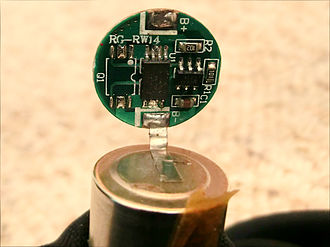- Joined
- 27 Jan 2008
- Messages
- 23,671
- Reaction score
- 2,668
- Location
- Llanfair Caereinion, Nr Welshpool
- Country

Not talking about batteries made for cameras, drills etc where the charger clearly matches the battery, but the likes of the AA cell which has over time changed from 600 mAh with NiCad to 3500 mAh with Ni-Nh and other modern rechargeable cells.
The old battery/cell charger had a number of methods to recharge, from Delta V where it looked for the characteristic dip in voltage when it became fully charged, to a really low charge rate unlikely to damage the cell, to a temperature sensor and lid to retain the heat to sense when fully charged.
However designed to charge the old 600 mAh cell it would often also have a time out, so if the sensing did go wrong, it would stop anyway, but when there were no Ni-Nh cells made, the charger will not have a warning on it to only use with NiCad or with cells under a set mAh rating. Neither did most have a date of manufacture, so it is likely some chargers will time out before the cell is fully charged.
It seems some batteries have the charge regulation built in
 picture from Wikipedia and one must question how this works with a Delta V charger, or any charger which stops the charging with time or temperature sensors. We can buy a 3500 mAh cell, but can we use the battery to its full.
picture from Wikipedia and one must question how this works with a Delta V charger, or any charger which stops the charging with time or temperature sensors. We can buy a 3500 mAh cell, but can we use the battery to its full.
I have bought over the years so many chargers, some using USB some go into the mains, some only charge pairs, as a battery others charge single cells. I have also bought many rechargeable cells, and today no idea of age. I got 8 C cells for my FT290R radio which were rather expensive at the time, after the power plug part disconnected and as a result fried the originals when the 12 volt lead acid battery connected to the NiCad as the switch on the power plug connected both together, modified after that with diodes instead of switch to stop a repeat. However the replacements must now be some 20 odd years old, still going strong. The charger is simply very slow, there is no regulation. But can transmit at 2.5W so it must be quite a drain on the battery. The charger will just about hold its own on receive.
So what should we be looking for on chargers and batteries to get the full out of them?
The old battery/cell charger had a number of methods to recharge, from Delta V where it looked for the characteristic dip in voltage when it became fully charged, to a really low charge rate unlikely to damage the cell, to a temperature sensor and lid to retain the heat to sense when fully charged.
However designed to charge the old 600 mAh cell it would often also have a time out, so if the sensing did go wrong, it would stop anyway, but when there were no Ni-Nh cells made, the charger will not have a warning on it to only use with NiCad or with cells under a set mAh rating. Neither did most have a date of manufacture, so it is likely some chargers will time out before the cell is fully charged.
It seems some batteries have the charge regulation built in

I have bought over the years so many chargers, some using USB some go into the mains, some only charge pairs, as a battery others charge single cells. I have also bought many rechargeable cells, and today no idea of age. I got 8 C cells for my FT290R radio which were rather expensive at the time, after the power plug part disconnected and as a result fried the originals when the 12 volt lead acid battery connected to the NiCad as the switch on the power plug connected both together, modified after that with diodes instead of switch to stop a repeat. However the replacements must now be some 20 odd years old, still going strong. The charger is simply very slow, there is no regulation. But can transmit at 2.5W so it must be quite a drain on the battery. The charger will just about hold its own on receive.
So what should we be looking for on chargers and batteries to get the full out of them?
